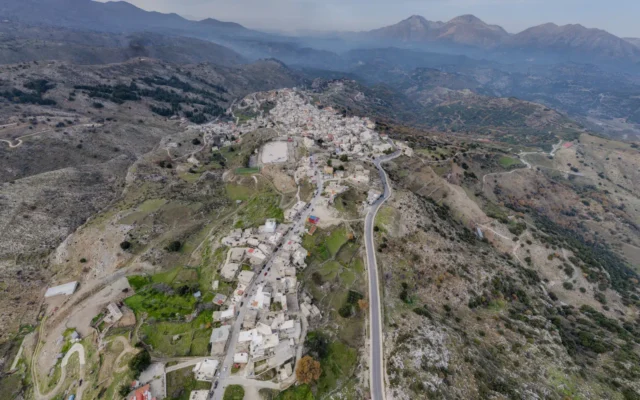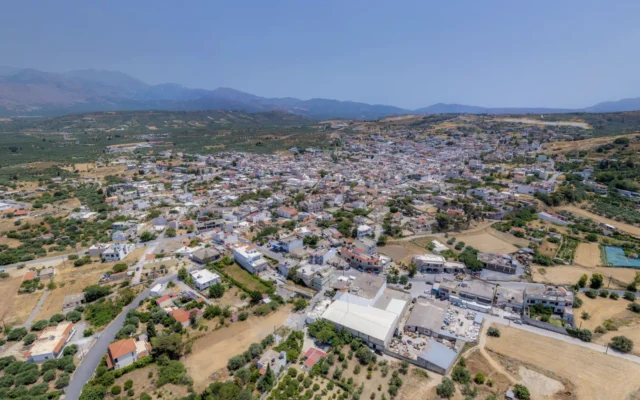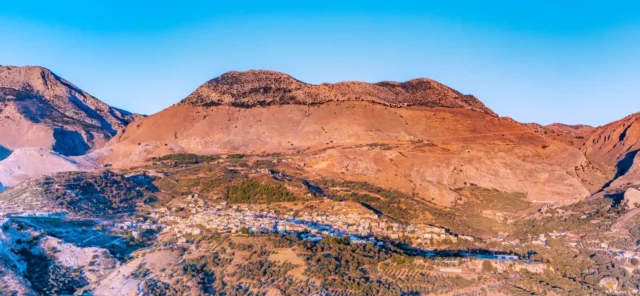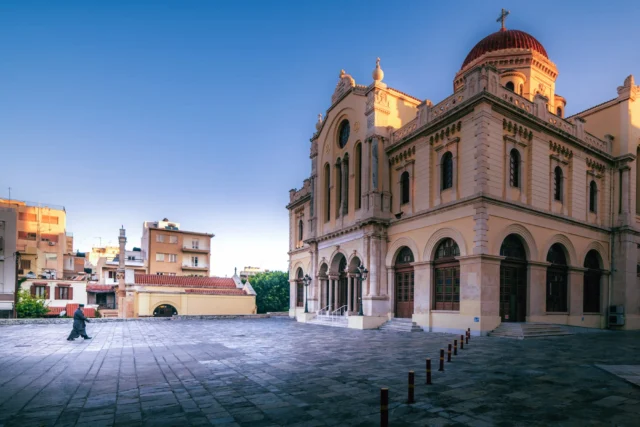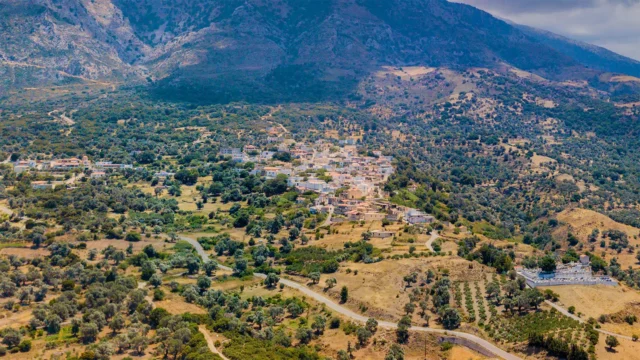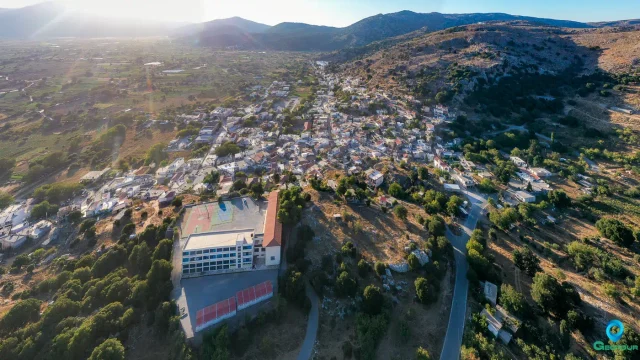829
listings found
Categories
Active filters:
Siteia, Siteia
Siteia, a coastal town in eastern Crete, boasts a rich history dating back to ancient Greece. Possibly the birthplace of Myson, one of the Seven Sages of Greece, Siteia's historical significance is evident in its landmarks like the Kazarma fortress, a Venetian-era structure, and remnants of an Early Christian church and Roman fish tanks. The Archaeological Museum houses artifacts spanning millennia, including a collection of vessels and Linear A tablets. Today, Siteia is a vibrant town with a mixed economy of agriculture, handicrafts, and tourism. Visitors can enjoy various beaches, including Siteia Beach and Vai Beach, and explore the local culture at the Folklore Museum and the Museum - Exhibition of local products. The town is easily accessible by road, air, and sea, with Siteia Airport offering connections to various destinations.
Ierapetra, Ierapetra
Ierapetra (Ιεράπετρα) is a coastal city located on the southeastern coast of Crete, Greece. It is the largest town in the regional unit of Lasithi and the fourth largest in […]
Agios Nikolaos, Agios Nikolaos
Agios Nikolaos, a coastal town in Crete, sits on the ancient site of Lato pros Kamara, once the seaport of the Dorian city Lato Etera. In the 13th century, the Venetians built the Mirabello fortress there, which was later destroyed and rebuilt several times. Today, Agios Nikolaos is the capital of the Lasithi region and a popular tourist spot. Visitors can explore the ruins of the Venetian fortress, relax by Lake Voulismeni, and visit nearby attractions like Spinalonga, a fortified island with a fascinating history as a leper colony. The town also features beautiful parks, interesting sculptures, and charming squares.
Neapoli, Agios Nikolaos
Neapoli is a settlement located in the Lasithi regional unit on the island of Crete, Greece. It belongs to the Municipality of Agios Nikolaos
Zaros, Phaistos
Zaros, a town in Crete's Heraklion region, sits on Mount Samari's slopes. Known for "Zaros" bottled water, it boasts Lake Votomos, a recreational area with trout farms, and the Gorge of Rouvas. The historic Monastery of Vrontisi and Saint Nicholas Church, featuring frescoes, are nearby. Ancient Gortyn sourced water from Zaros' Sterna spring, with Roman aqueduct remnants still visible. The 1583 Kastrofylakas census mentions Zaros. The town's economy is based on agriculture.
Tympaki, Phaistos
Tympaki, also known as Tympakion, is a town in Crete, Greece, with a rich history dating back before its official recognition in 1925. Located in the Messara plain, 65 km southwest of Heraklion, Tympaki is known for its agricultural production (olives, fruits, vegetables) and proximity to beaches like Matala. The town was destroyed during WWII and later rebuilt, influencing its architecture. Its history includes a strategic airfield used during the war, now hosting motorsports events. Nearby are the archaeological sites of Phaistos and Agia Triada. The population has grown significantly since 1900, reaching approximately 5,000 today.
Anogeia, Anogia
High on Mount Psiloritis, its name means "upper land." Founded traditionally around the Church of St. John (11th c. paintings), near ancient sites like Ideon Cave. Known as "Vasilika Anogeia" under the Byzantine Kallergis family, it later became an Ottoman vakuf. Despite privileges, it was a center of resistance, leading to destructions by Ottomans (1822, 1867) and Nazis (1944) following the Kreipe abduction. A "Martyred Village," rebuilt through resilience, known for its unique culture: music (lyra players Nikos Xylouris, Psarantonis), weaving (first women's cooperative), dialect, and shepherding traditions (Intangible Cultural Heritage).
Rethymno, Rethymno
Rethymno, the capital of the Rethymno regional unit, is a historic city on the north coast of Crete, Greece. Built on the site of the ancient Minoan city of Rithymna, Rethymno boasts a rich history spanning from the Neolithic period to the modern day. The city has been ruled by the Minoans, Byzantines, Venetians, and Ottomans, each leaving their mark on its culture and architecture. Rethymno's Venetian-era old town is one of the best-preserved in Greece, featuring landmarks like the Fortezza, Porta Guora, Rimóndi Fountain, and the Loggia. The city also has several Ottoman monuments, including the Ibrahim Khan Mosque, Veli Pasha Mosque, Valide Sultan Mosque, and Neratze Mosque. Rethymno's cultural heritage is further enriched by the Municipal Garden, Mikrasiaton Square, and numerous churches, museums, and statues. The city is also home to the University of Crete and the Hellenic Mediterranean University.
Damasta, Malevizi
Damasta, a Cretan village in Heraklion's Malevizi municipality, sits on Psiloritis' slopes. Known for agriculture, livestock, and honey, it's historically significant, mentioned in the 1583 Kastrofylakas census. During WWII, the village was destroyed by Germans, with 37 residents executed at Keratidi, commemorated by a monument. Damasta features Venetian-era churches like Saint Nicholas and Panagia, and Saints George and Demetrios. The village, part of the Tylisos municipality, has a folklore museum and a cultural association. Its population has fluctuated over time, from 338 in 1583 to 244 in 2011. The Damasta community includes nearby Astrino.
Aimonas, Mylopotamos
Aimonas is a settlement located in the Rethymno regional unit on the island of Crete, Greece. It belongs to the Municipality of Mylopotamos
Apladiana, Mylopotamos
Apladiana is a settlement located in the Rethymno regional unit on the island of Crete, Greece. It belongs to the Municipality of Mylopotamos
Ini, Minoa – Pediada
A village and community seat in Minoa Pediada, 44km from Heraklion, believed to be the location of the ancient city of Arcadia. Arcadia was an autonomous city, allied first with Knossos and later Lyttos, with its own currency. The village was listed as Igni in the 1583 Castrofilacas census. During the Ottoman era, it was primarily inhabited by Turks. The modern community includes the settlements of Machairas and Monastiraki. The Ini Dam, a key irrigation reservoir, is next to the village.
Rotasi, Archanes – Asterousia
Rotasi is a settlement located in the Heraklion regional unit on the island of Crete, Greece. It belongs to the Municipality of Archanes - Asterousia
Arkalochori, Minoa – Pediada
Arkalochori is a settlement located in the Heraklion regional unit on the island of Crete, Greece. It belongs to the Municipality of Minoa - Pediada
Krousonas, Malevizi
Kroussonas, a village in Crete's Mount Psiloritis foothills, has a long history, with records dating to 1280 and settlements back to Mycenaean/Geometric periods. Known for agriculture, especially vineyards and olive groves, the village is also involved in agritourism. Its history includes Venetian occupation, the Cretan War of Independence, and WWII resistance. The village is located 21.8 km southwest of Heraklion. Kroussonas has a population of around 2,000 and features traditional Cretan life alongside modern amenities, including schools, health facilities, and a women's agricultural cooperative.
Heraklion, Heraklion
Heraklion, the capital and largest city of Crete, is on the north coast and has served as a harbor for Knossos since the Minoan era. Its identity evolved through various names, including Chandax under Arab rule and Candia during the Venetian period, when it became a major fortress. The city is defined by the massive Venetian Walls and the Koules fortress at its harbor. It withstood the historic 22-year Siege of Candia before falling to the Ottomans. Following the union with Greece, it received Greek refugees from Asia Minor.
Palaiochora, Kandanos – Selino
Palaiochora is a settlement located in the Chania regional unit on the island of Crete, Greece. It belongs to the Municipality of Kandanos - Selino
Fourfouras, Amari
Located in the Amari Municipality of Rethymno, Crete, this village is situated on the western foothills of Mount Psiloritis at an altitude of 460 meters, offering views of the Amari Valley. First mentioned in the 1583 Venetian census, it is now the largest village in Amari with 513 residents. It serves as the historical seat of the municipality and the second seat of the Holy Metropolis of Lampe, Syvritos, and Sfakia. Today, it is a commercial hub with a Town Hall, medical center, schools, and numerous businesses. A popular starting point on the European path E4 for climbing Psiloritis.
Nefs Amari, Amari
Amari, a Cretan village at 460m, has origins from antiquity, with mentions in 1225 and Venetian records. It became Nevs Amari under Ottoman rule, serving as a capital. A resistance hub in WWII, it saw German destruction in 1944. Its name may derive from Latin "love" or a ruler. Key sites include Byzantine churches (Agia Anna, Agios Theodoros, Agioi Anargyroi, Kera Panagia), Asomaton Monastery, and a Venetian bell tower. Once a center of learning, it now focuses on agriculture, maintaining authentic Cretan traditions. Population fluctuated, currently at 111.
Tzermiado, Lasithi plateau
Tzermiado is a settlement located in the Lasithi regional unit on the island of Crete, Greece. It belongs to the Municipality of Lasithi plateau











